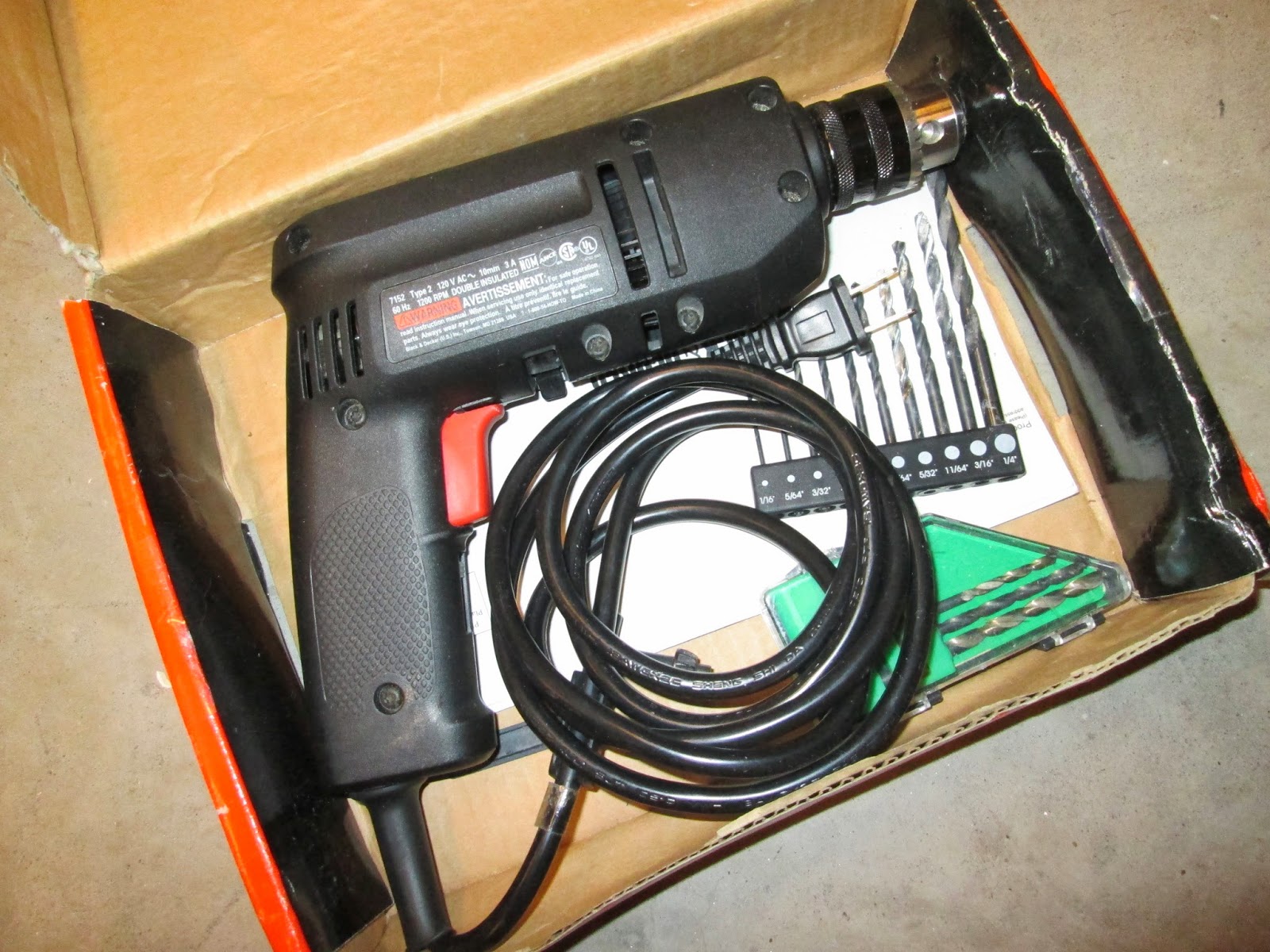 |
| HaMelech Parpar supervising the work |
I had fun that night, noisily drilling holes in it. I felt almost handy and self-reliant. (I was glad I had my father's electric drill; using a nail and hammer might have been possible but would not have created large enough holes. You'd have to lay the bin on soft soil and hammer the nails from the inside out.) I used a metal file to remove the spirals of plastic that were sticking out from the edges of each hole that might have restricted airflow.
My first contributions to my compost bin were pieces of seed potatoes left over from planting I did a few days ago. I also added a little bit of old potting soil, some dry clippings from the yard, and a few green leaves. (Since nothing will grow under a pine tree, I didn't add pine leaves, but I read later that it's fine to include them.)
 |
| Dad's electric drill |
Years ago, a neighbor of mine had a huge compost pile and I loved taking my cooking scraps to her yard—contribution instead of waste. (Why do stores sell bundles of cilantro when all we ever need is a couple of springs? I always put the bundle of greens in a small glass of water to enjoy their fragrance, but it only keeps for a day or so.)
Holly Winkeljohn's article tells us to equally mix browns and greens to ensure the rapid breakdown of . If the greens and browns aren't balanced, the bin will put off a strong odor.
 |
| The result |
- Greens are items rich in nitrogen: freshly cut grass, pruned plants, tea bags and tea leaves, peelings, used coffee grounds, horse and cow manure, and vegetables.
- Browns are items rich in carbon: dried twigs, fall leaves, paper, pinecones and pine needles, shredded newspaper, straw, and wood chips.
- Avoid meat and dairy products, diseased plants, grease, oil, and pet poop.
- You can add eggshells to your compost bin as long as you rinse them thoroughly. They are a source of calcium.
- Citrus fruits may keep scavengers away. Cut the peels into small pieces because otherwise they take a very long time to break down.
- Compost This is a great site with tiled pictures of items you might want to compost and the word "yes," "no," or "maybe" on each one. You can click on the picture if you want to learn more.
My yard has no shade in the summer and we're expecting particularly hot weather, so I’ll have to add water each morning when I take water out for the baby quails. I'm very excited about my compost bin and can't wait to watch the magic.
If you have any composting tips or suggestions, I’d love to hear from you!
Update: Now that the bin in nearly full, I have trouble rolling it or even using a shovel to stir the contents. Consider investing in the real thing.

No comments:
Post a Comment
Thank you for commenting! I enjoy hearing from my readers and getting a chance to see their blogs, too!